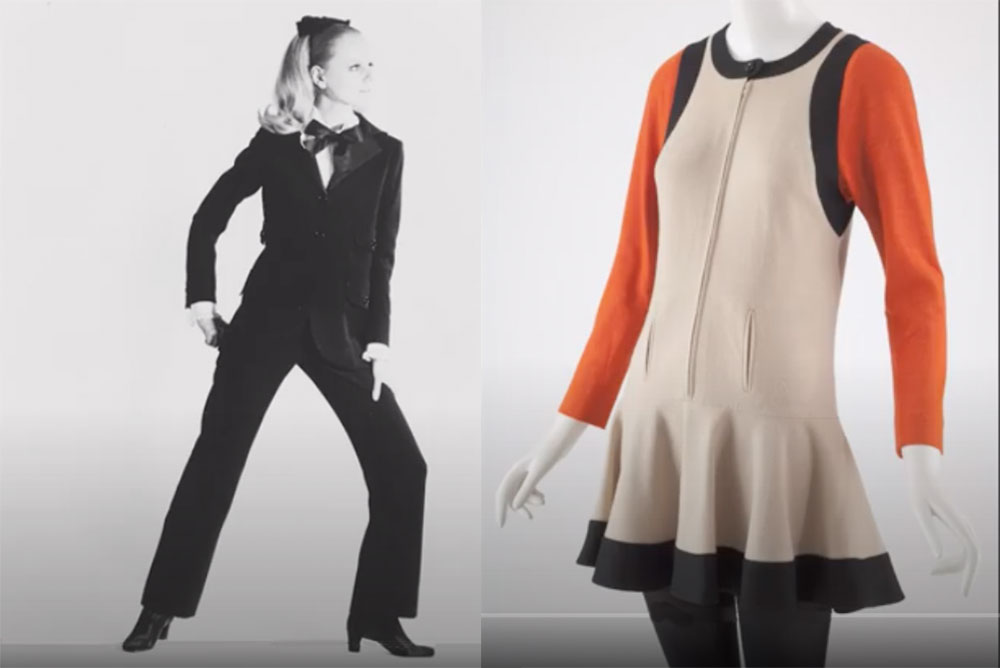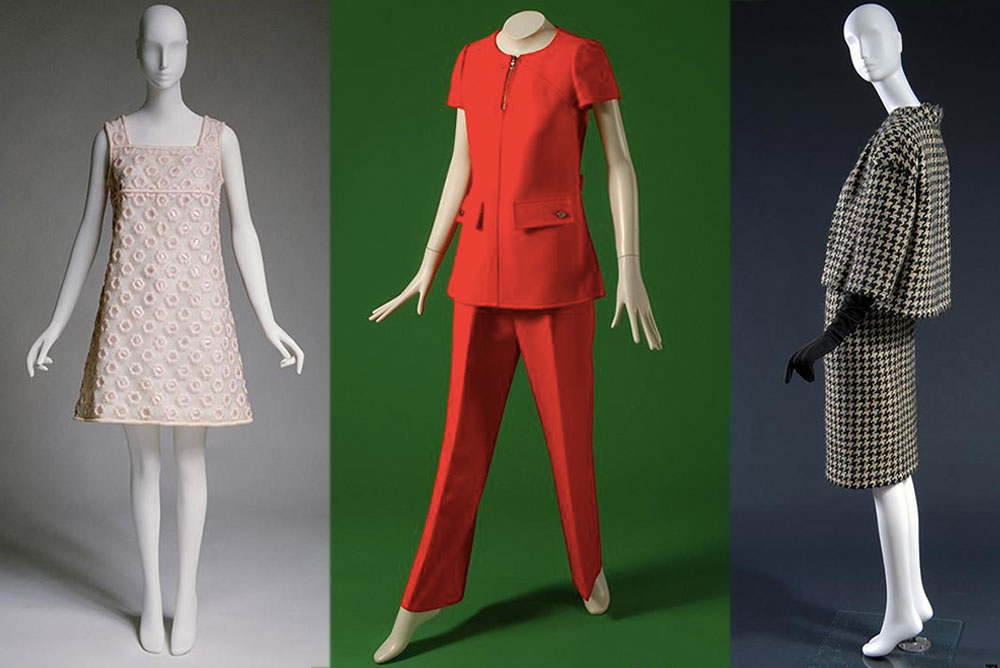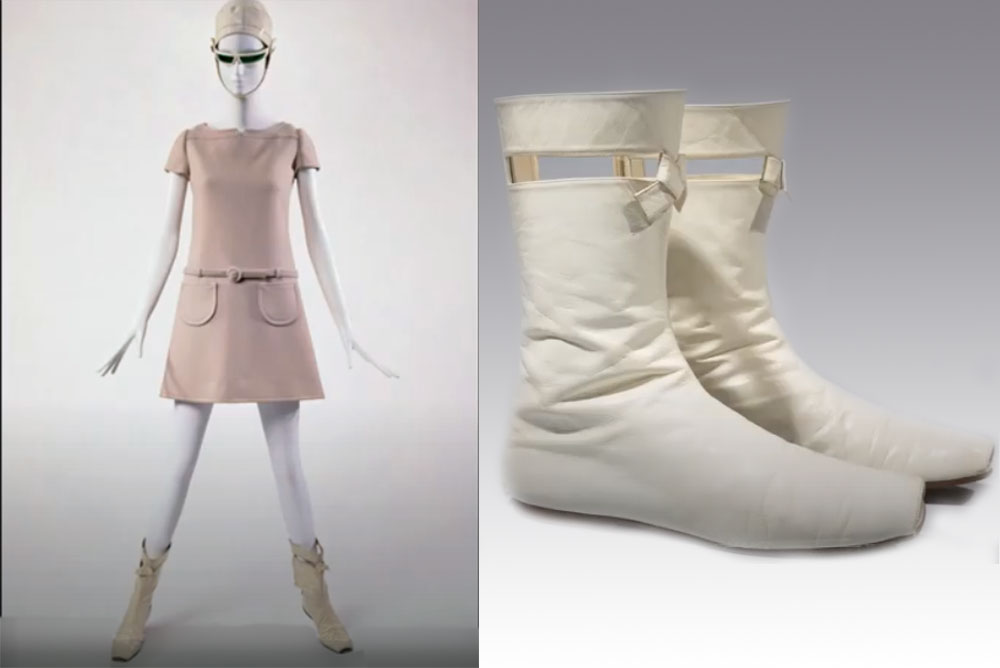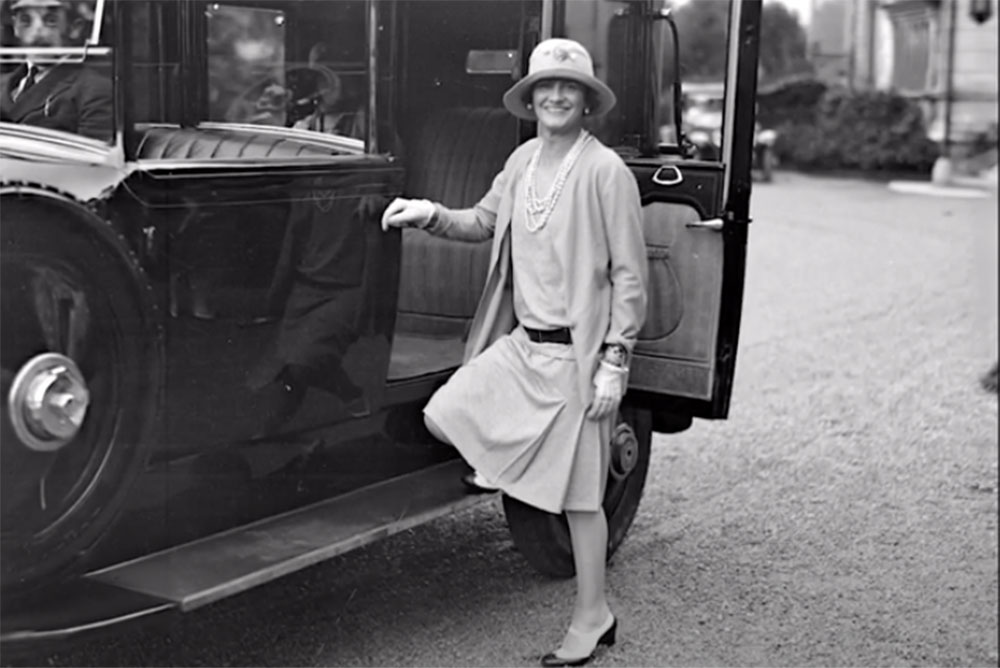
LEFT: Yves Saint Laurent introduced “le smoking,” his provocative tuxedo look for women in the 1960s and let it evolve over the years. For the first time, women wore pants to work (controversial even in more recent times), for play and even out on the town at night. Shown here on the model Ulla is the “First” tuxedo, fall-winter 1966, haute couture. / Photo © Fondation Pierre Bergé – Yves Saint Laurent, Paris/Gérard Pataa. RIGHT: Mary Quant of London is the one who introduced the miniskirt, inspired by what the young girls on the streets of London were wearing. The style arrived Stateside in 1966, and Isadore Barmash of the New York Times called it “the most important British import since the Beatles.” Indeed. / © Museum at FIT, New York.
THE OTHER DAY I sent the photos for this post to our art director, LittleBird Kathy, and in return she confessed that she’s been whiling away some pandemic hours re-watching episodes of The Mary Tyler Moore Show.
“I love most seeing the clothes we used to wear,” Kathy wrote. “The perky mini dresses, the flared pant suits. The clothes were so darned cute then. . . . I just never understood why Rhoda lived in an unfinished attic.”
Mary’s clothes were the cute ones, mostly. They were ’60s-meets-modern-working-woman. Her neighbor and sidekick Rhoda, with all those gypsy-like head scarves, was the other ’60s-’70s woman—exotic and brassy (with one helluva New York accent) and just the type of person, I would argue, to live in an unfinished attic.
Kathy loved Mary’s clothes but Rhoda’s brass.
All of this is by way of saying that the Museum at FIT sent out a Designer Spotlight this week featuring the 1960s designs of couturier André Courrèges, contained in the museum’s collection of 50,000 pieces of clothing and accessories. Exquisitely tailored, the garments are the shining models for the bonded-polyester dresses many of us came to wear back then as the designs of Courrèges and London designer Mary Quant made their way down the fashion ladder to those of us near the lower rungs. (That bonding gave cheaper clothes the structure without the expense of sophisticated tailoring.) The look was always lean, the silhouette uncluttered.
But the Museum at FIT also has a couple of videos, parts one and two of 100 Years of Fashion on its website. Scrolling through the decades with the FIT curatorial staff shows us how far we’ve come and . . . not. Coco Chanel’s relaxed jersey separates were heralded in the 1920s as radical because they were simple and comfortable. Today, I find them dowdy; her design house languished for some years before the fashion genius Karl Lagerfeld took over and sexed up the look, the one we know today.
Poring through the FIT online files is a bit of a treasure hunt with a somewhat tricky map. But the search can be worth a solid hour or two. It’s certainly capable of drowning out Election 2020 angst.
—Nancy McKeon

Paris didn’t have the street-fashion scene of London, so, the FIT museums’s curators explain, couturier André Courrèges used the idea of “the future” to begin his own fashion odyssey into the modern. The technically gifted dressmaker had worked for Balenciaga and created such structured pieces as the elegantly constructed short-jacketed suit on the right, from his first collection, fall-winter 1961-62. The other two garments, from 1967 and ’68, were more pared-down, more direct, using fabrics that held structure for a new silhouette. / © Museum at FIT, New York.

And what a pared-down future Courrèges envisioned. To address the younger, less affluent customer, he created a diffusion line, Couture Future (which really rhymes in French). His signature look is embodied in this space-age dress from around 1965 with helmet hat, plus the signature white boots, which were widely copied and came to be known as go-go boots. / © Museum at FIT, New York.

The Museum at FIT is featuring two video episodes of “100 Years of Fashion,” available from its website. The still photo shown here is Coco Chanel in 1928 dressed in her rule-breaking soft jersey ensemble, clothes that didn’t require serious undergarments and were meant to be comfortable and modern. This look is a far cry from what the typical Chanel suit (tweed, fringed edges, gold buttons) evolved into, but in a way it looks just as dowdy. The Chanel suit was revived when Karl Lagerfeld took over the design and added sex and excitement to it. / Photo Coco Chanel in Biarritz, France, via Chanel.com, © TopFoto / Roger-Viollet.
